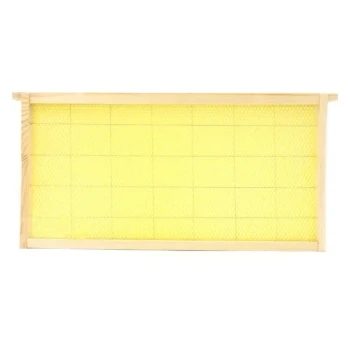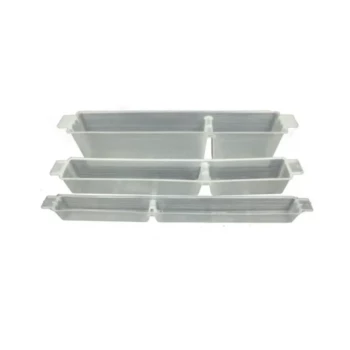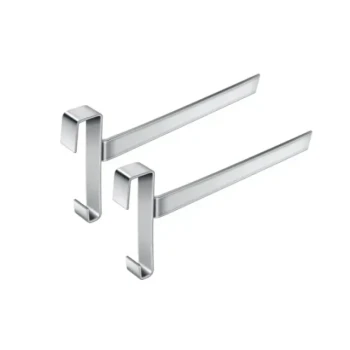Promptly replacing damaged beehive components is non-negotiable for responsible beekeeping. A structurally compromised hive is not a minor inconvenience; it is a direct threat to the colony's survival. Broken, warped, or cracked parts expose the bees to environmental stress, pest invasions, and disease, forcing them to divert energy from honey production and population growth to simple defense and repair.
A beehive is more than a box; it is a fortress and a climate-controlled nursery for a complex superorganism. Damage to this structure is not a cosmetic issue—it is a critical breach of the colony's defenses that undermines its health, stability, and productivity.

The Cascade of Risks from Structural Damage
A small crack or a warped lid might seem insignificant, but it sets off a chain reaction of negative consequences that can weaken and ultimately doom a honey bee colony.
Compromised Climate Control
A healthy colony maintains the brood nest at a precise temperature, typically between 93-96°F (34-35.5°C), regardless of the outside weather.
Gaps and cracks create drafts and allow moisture to penetrate the hive. This breaks the colony's climate seal, forcing the bees to expend enormous energy and consume valuable honey stores just to stay warm and dry.
This diverted energy comes at a high cost: less energy is available for raising new brood, foraging for nectar, and defending the hive.
Breached Defenses Against Pests
A sound hive has limited entrances that are easily guarded by the bees. Structural flaws create undefended backdoors for a host of destructive pests.
Small Hive Beetles and Wax Moths thrive in compromised hives. They exploit cracks to enter and lay eggs in dark, undefended corners. Rotting wood and gaps provide perfect hiding places where these pests can multiply, eventually overrunning a weakened colony.
An Invitation to Robbers and Predators
Weak points in the hive structure are an open invitation to opportunists that can quickly decimate a colony.
Robbing bees from other hives are drawn to the scent of honey leaking from a damaged hive. They can easily overwhelm the guard bees by using undefended entrances, stealing all of the colony's food stores and potentially introducing diseases like American Foulbrood.
Larger predators, such as wasps, hornets, and skunks, can more easily exploit a broken bottom board or a poorly fitting lid to access and consume the bees and their brood.
Understanding the Trade-offs of Delay
Delaying repairs is often framed as a cost-saving measure, but it almost always results in a far greater cost down the line. The perceived trade-off is a dangerous illusion.
The "It's Just a Small Crack" Fallacy
A minor flaw rarely stays minor. A small crack allows moisture to seep into the wood, which causes further warping and rot. This enlarges the original crack, creating a feedback loop of escalating damage.
What starts as a simple repair job can quickly become a need to replace an entire hive body, a far more expensive proposition.
Impeded Beekeeper Inspections
Beekeeping requires regular inspections to monitor colony health. Warped boxes and broken frames do not fit together properly, making it difficult to open the hive and remove frames.
This not only frustrates the beekeeper but also leads to rolling and crushing bees during inspections, agitating the colony and potentially killing the queen. Effective management becomes impossible when the equipment itself is an obstacle.
The Secondary Concern: Aesthetics
While the health of the colony is the paramount concern, the appearance of your apiary does matter. A well-maintained hive reflects a diligent and caring beekeeper.
Neglected, decaying equipment suggests a lack of attention that can harm your reputation and, more importantly, is a visual indicator of the underlying risks your bees are facing.
Prioritizing Repairs for a Thriving Colony
Your approach to repairs should be proactive, not reactive. Use your regular hive inspections to identify and triage any structural issues before they escalate.
- If your primary focus is Colony Health & Survival: Immediately replace any component that compromises the hive's weather seal, such as warped lids, cracked hive bodies, or broken bottom boards.
- If your primary focus is Pest & Disease Prevention: Prioritize sealing all cracks and replacing any wood that is rotting or soft, as these serve as entry points and breeding grounds for pests.
- If your primary focus is Ease of Management: Systematically replace any ill-fitting boxes or broken frames that make inspections difficult, as this reduces stress on both you and your colony.
A structurally sound hive is the essential foundation upon which a healthy and productive bee colony is built.
Summary Table:
| Risk of Damaged Parts | Consequence for the Colony |
|---|---|
| Compromised Climate Control | Bees expend energy on temperature regulation, reducing honey production and brood rearing. |
| Breached Defenses | Creates entry points for pests like Small Hive Beetles and Wax Moths, and predators. |
| Increased Disease Risk | Allows robbing bees to steal honey and potentially introduce diseases like American Foulbrood. |
| Impeded Hive Management | Warped boxes and broken frames make inspections difficult, leading to crushed bees and aggravation. |
Protect your investment and ensure your apiary's success with durable, reliable equipment from HONESTBEE.
Don't let compromised equipment put your colonies at risk. We supply commercial apiaries and beekeeping equipment distributors with high-quality, wholesale-focused beekeeping supplies and equipment designed for longevity and ease of use.
Contact HONESTBEE today to discuss your needs and learn how our products provide the solid foundation your bees need to thrive.
Visual Guide

Related Products
- Assembled Wooden Bee Frames with Beeswax Foundation Ready to Use by HONESTBEE
- Plastic Bee Frame Beekeeping Hive Frames for Wholesale
- HONESTBEE Wired and Assembled Wooden Bee Frames Foundation for a Thriving Hive
- 4 Frame Plastic Nuc Boxes for Beekeeping Bee Nuc Box
- Assembled Wooden Bee Frames with Plastic Foundation for Durability and Convenience by HONESTBEE
People Also Ask
- What are some tips for setting up hive frames? Build a Strong Foundation for Your Hive
- Can I reuse old frames? A practical guide to saving money and reducing waste
- What are the main parts of a hive frame? A Guide to Modern Hive Anatomy
- Can old bee frames be reused? Weighing the Risks vs. Rewards for Your Hive
- How many frames fit in a 10 frame hive? A Guide to Maximizing Your Hive's Potential



















